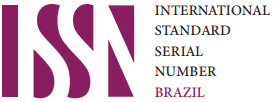Transtorno de pânico: aspectos psicopatológicos e fenomenológicos
DOI:
https://doi.org/10.25118/2763-9037.2013.v3.317Palavras-chave:
ansiedade, pânico, transtorno, psicopatologia, fenomenologiaResumo
O transtorno de pânico é um transtorno de ansiedade caracterizado pela presença de três síndromes clínicas: o ataque de pânico, a ansiedade antecipatória e a esquiva fóbica. Nesse artigo de revisão o autor descreve a psicopatologia e fenomenologia desse importante transtorno de ansiedade. São também mencionados estudos laboratoriais de ataques de pânico.
Downloads
Métricas
Referências
• 1.American Psychiatric Association. Diagnostic and Statistic Manual of Mental disorders.3rd edition. Washington, DC, 1980.
• 2. American Psychiatric Association. Diagnostic and Statistic Manual of Mental disorders.3rd edition-revised. Washington, DC, 1987.
• 3. American Psychiatric Association. Manual Diagnóstico e Estatístico de Transtornos Mentais. DSM-IVquarta edição. Porto Alegre: Artes Médicas, 1995.
• 4. American Psychiatric Association. DSM-IV-TR: manual diagnóstico e estatístico de transtornos mentais. 4a Ed. Porto Alegre: Editora Artmed; 2002.
• 5. Classificação de Transtornos Mentais e de Comportamento da CID-10. Porto Alegre: Artes Médicas, 1992.
• 6. Faravelli C, Paionni A. Panic disorder: clinical course, morbidity and comorbidity. In: Anxiety Disorders: An Introduction to Clinical Management and Research. Eric JL Griez, Carlo Faravelli , David Nutt , Joseph Zohar. New York: John Wiley & Sons, Ltd, pp 53-79, 2001.
• 7. Gorman JM, Liebowitz MR, Fyer AJ, Stein J. A neuroanatomical hypothesis for panic disorder. Am J Psychiatry 1989; 146 (2): 148-161. DOI: https://doi.org/10.1176/ajp.146.2.148
• 8. Ballenger JC. Panic disorder in the medical setting. J Clin Psychiatry 1997; 58(suppl 2): 13-17.
• 9. Katon W. Panic disorder and somatization. Am J Medicine 1984; 77: 101-106. DOI: https://doi.org/10.1016/0002-9343(84)90443-1
• 10. American Psychiatric Association. Practice guideline for the treatment of patients with panic disorder. Washington, DC, 1998.
• 11. Mellman TA, Udhe TW. Electroencephalographic sleep in panic disorder. Arch Gen Psychiatry 1989; 46: 178-184. DOI: https://doi.org/10.1001/archpsyc.1989.01810020080013
• 12. Klein DF, Gorman JM. A model of panic and agoraphobia development. Acta Psychiatr Scand 1987; 76 (335 suppl): 87-95. DOI: https://doi.org/10.1111/j.1600-0447.1987.tb07753.x
• 13. Andrews G, Slade T. Agoraphobia without a history of panic disorder may be part of the panic disorder syndrome. J Nerv Ment Dis 2002; 190: 624-630. DOI: https://doi.org/10.1097/00005053-200209000-00008
• 14. Klein DF. Anxiety reconceptualised. In: Klein DF, Raskin J. Anxiety: New Research and changing concepts. New York: Raven Press, 1981.
• 15. Noyes R, Crowe RR, Harris EL, et al. Relationship between panic disorder and agoraphobia: a family study. Arch Gen Psychiatry 1986; 43: 227-232. DOI: https://doi.org/10.1001/archpsyc.1986.01800030037004
• 16. Klein DF, Klein HM. The status of panic disorder. Current Opinion in Psychiatry 1988; 1: 177-183.
• 17. Shioiri T, Someya T, Murashita J, Takahashi S. The symptom structure of panic disorder: a trial using factor and cluster analysis. Acta Psychiatr Scand 1996; 93: 80-86. DOI: https://doi.org/10.1111/j.1600-0447.1996.tb09806.x
• 18. Margraf J, Taylor B, Ehlers A, Roth WT, Agras WS. Panic attacks in the natural environment. J Nerv Mental Disease 1987; 175: 558-565. DOI: https://doi.org/10.1097/00005053-198709000-00008
• 19. De Beurs E, Garsses B, Buikhuisen M, Lange A, Van Balkom A, Dyck R. Continuous monitoring of panic. Acta Psychiatr Scand 1994; 90: 38-45. DOI: https://doi.org/10.1111/j.1600-0447.1994.tb01553.x
• 20. Briggs AC, Stretch DD, Brandon S. Subtyping of panic disorder by symptom profile. Brit J Psychiatry 1993; 163:201-209. DOI: https://doi.org/10.1192/bjp.163.2.201
• 21. Valença AM, Nardi AE, Nascimento I, Mezzasalma MA, Lopes FL, Zin WA. Ataques de pânico provocados pelo dióxido de carbono: estudo clínico-fenomenológico. Rev Bras Psiquiatr 2001; 23 (1): 15-20. DOI: https://doi.org/10.1590/S1516-44462001000100005
• 22.Biber B, Alkin T. Panic disorder subtypes: differential responses to CO2 challenge. Am J Psychiatry 1999; 15 6(5): 739-744. DOI: https://doi.org/10.1176/ajp.156.5.739
• 23. Bandelow B, Amering M, Benkert O, et al. Cardio--respiratory and other symptom clusters in panic disorder. Anxiety 1996; 2: 99-101. DOI: https://doi.org/10.1002/(SICI)1522-7154(1996)2:2<99::AID-ANXI7>3.0.CO;2-8
• 24. Freire RC, Nardi AE. Panic disorder and the respiratory system: clinical subtype and challenge tests. Rev Bras Psiquiatr. 2012; 34(Supl1):S32-S52. DOI: https://doi.org/10.1016/S1516-4446(12)70053-3
Downloads
Publicado
Como Citar
Edição
Seção
Licença

Este trabalho está licenciado sob uma licença Creative Commons Attribution-NonCommercial 4.0 International License.
Debates em Psiquiatria permite que o (s) autor (es) mantenha(m) seus direitos autorais sem restrições. Atribuição-NãoComercial 4.0 Internacional (CC BY-NC 4.0) - Debates em Psiquiatria é regida pela licença CC-BY-NC
































